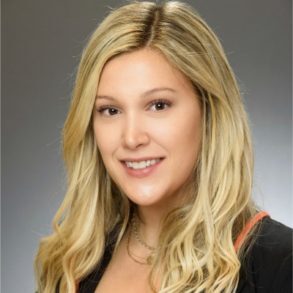For decades, the built world has been largely male-dominated, leaving women underrepresented in leadership roles and often enduring gender-based discrimination and barriers. In recent years, women have begun to break this traditional mold to frontline greater diversity and inclusivity initiatives within the industry. Last month, BuiltWorlds released our 2023 Mavericks 50 List, highlighting 50 AEC leaders that are serving as trendsetters, innovative thinkers, and catalysts of change in their respective fields. Within this piece, we will be taking a deeper dive into the backgrounds of 5 women from this year’s Mavericks list and how they are shaping the industry.
At the conclusion of the 2023 Americas Summit, a special reception and dinner will be made available to celebrate the 2023 Mavericks Nominees.
*Please Note: RSVP is required. There is an additional charge of $200 to attend the Mavericks Dinner.
The Mavericks Reception | 5pm-7pm | (Open to all Summit Attendees)
The Mavericks Dinner | 7pm -9pm | (RSVP Required)
Dr. Sarah Buchner
Founder & CEO of Trunk Tools

Sarah discovered her knack for the built world through her work as an apprentice at only 12 years-old for her father, who worked as a carpenter.
"I worked my way up to site superintendent and project executive, running large construction projects with 600 or more trades people working for me. These experiences encouraged me to stay in the industry, pursue relevant education, and change the industry to the better as much as possible." Sarah Buchner, Trunk Tools
She noted the clear disparity of women's involvement within the industry and hopes to leverage Trunk Tools as an inclusive space for anyone interested in the field. She has begun working as a mentor for young women in the industry, empowering a new generation to create lasting change.
Currently, Sarah and the Trunk Tools team are excited about increasing personal tech adoption, with its platform serving as a direct means of support for workers.
"We think that this enables workers to be more connected to the job-sites on which they are working, maintaining situational awareness and developing a sense of ownership - and we believe that the workforce in the field is still the core of every construction site. Having been blue collar workers ourselves, many of us want to ensure new technology enables the skilled labor that drives this industry." Sarah Buchner, Trunk Tools
Looking ahead, Sarah and the Trunk Tools team are aiming to change the way that the industry views skilled labor. They hope to enable workers to advocate the importance of their work and earnings to jumpstart a new era of productivity and motivation.
Director of Strategic Business Development at Home Depot

Jennifer is an extremely accomplished business leader and investor with over a decade of experience in finance, strategy and corporate development. She holds an MBA from Stanford’s Graduate School of Business, along with a BA in Economics from Dartmouth College. Before joining The Home Depot, Jennifer worked as a private equity investor at TPG Capital and also held various positions in investment banking and strategy consulting.
Her career at The Home Depot began in 2016 as their Director of Corporate Development and she has flourished within the company ever since. As a founding member of Home Depot Ventures, Jennifer’s strong leadership skills have been a critical component of the fund’s success. She has led the development of their investment strategy thesis, created a network to support strategic investments, and fostered strong relationships with early-stage companies within the industry.
Prefab Research Coordinator at DPR Construction

"Growing up in Dubai in the 90s, I was fortunate to witness its incredible transformation from a desert to the city it is today. I was drawn to construction early in life while watching skyscrapers seemingly emerge from the sand." Belinda Carr, DPR Construction
Belinda's skills within STEM partnered with her ability to implement creativity into the space sparked her passion for the built world further. A pivotal moment for her was when she earned a full scholarship at the American University of Sharjah to pursue a Bachelor of Architecture degree.
She noted that hard work within any industry is the true key to success, while also working to address systemic hurdles within the space. Belinda implored women and other folks facing systemic injustices to seek out a support system and acknowledge their inherent worth within their respective space.
"The AEC industry is already far more inclusive than it was when I started off in construction, which is a promising sign. I hope that by spreading education about building science, products and technology, and simply being visible and accessible, I encourage more women to join our incredible industry." Belinda Carr, DPR Construction
Currently, Belinda is hosting a podcast called "Movers and Breakers" where she discusses innovation and emerging technologies within the industry with the individuals that are pushing change forward.
She also discussed her interest in seeing the intersection of AEC industry players working with folks from outside of the industry. Looking ahead, she is excited to see a shift towards a consumer-driven industry.
"I stepped out of the architecture world because the environment I was in was stifling, stagnant and resistant to change. I wanted to learn everything about construction, question the information available to us, and figure out how our industry can work smarter and build better. Unexpectedly, I’ve had dozens of architects reach out to me, saying that they use my videos at their offices to implement change. This reinforces my belief that bottom to top approach can lead to real change." Belinda Carr, DPR Construction
Director of EMDC & MPM Programs at Northwestern University

Shelley is highly experienced within the industry and has made significant contributions within design and construction over the course of her 15-year career. She holds a diverse skill set that includes structural design, project management, marketing, and business development. She has held leadership positions at top companies such as ArcelorMittal International and Thornton Tomasetti–boasting a global impact through her work, from the United States to Saudi Arabia.
She has contributed to major projects such as the Mercedes-Benz Stadium in Atlanta, the BMO Centre expansion in Calgary, and 150 N. Riverside in Chicago; driving innovative solutions that improve cost-efficiency, constructibility, and sustainability. She is also actively involved in industry organizations and is currently serving as the founding chapter chair of the Chicago Chapter for the Council on Tall Buildings and Urban Habitat.
Tessa Lau
Founder & CEO of Dusty Robotics

Tessa made a shift into the AEC industry when she noticed the low rate of technology adoption within the industry and hoped to make a change with her robust experience within the robotics industry.
"When I saw people on their hands and knees snapping chalk lines based off of paper plans, I knew there was an opportunity to improve that workflow and make it more efficient through robotic automation. And so Dusty [Robotics] was born!" Tessa Lau, Dusty Robotics
She noted that within the robotics industry the playing field has begun to level, allowing folks with different gender identities and levels of ability to make a lasting impact.
"When you're operating a robot, it doesn't matter how strong you are, or how much you can lift, or how much endurance you have. The reason I love bringing robotics to construction is because it opens the industry to more inclusive workforce." Tessa Lau, Dusty Robotics
Tessa is looking forward to seeing the industry continue to evolve and increase its robotic implementation. She noted her excitement about the potential for robotics to make a environmental impact by reducing waste within the industry.
"A whopping 10% of the cost of buildings goes towards rework, which translates to wasted materials and energy used to build the same building multiple times before you get it right. Highly accurate layout eliminates a lot of that waste, improving the industry's sustainability metrics and enabling builders to take on more ambitious projects over time." Tessa Lau, Dusty Robotics




Discussion
Be the first to leave a comment.
You must be a member of the BuiltWorlds community to join the discussion.